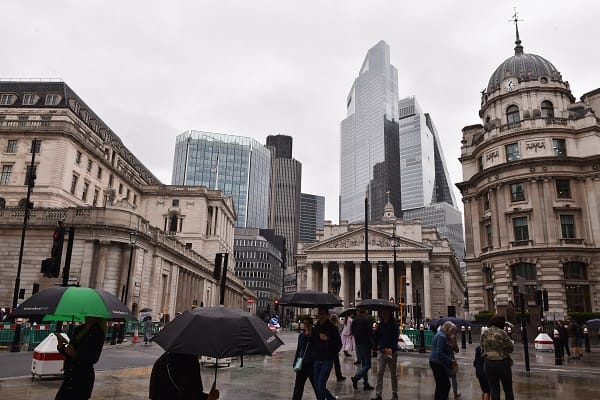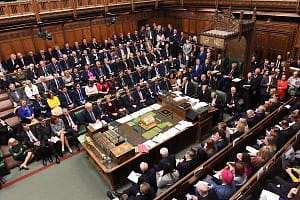The UK’s prolonged period of economic stagnation should begin to fade this year as falling inflation, potential interest rate cuts and tax reductions create momentum for growth in 2024 and 2025, according to the EY ITEM Club’s new Winter Forecast.
GDP expectations for 2024 have been upgraded from 0.7% in October’s Autumn Forecast to 0.9%, while the UK economy is now forecast to grow by 1.8% in 2025, up from 1.7% predicted in October.
However, despite the economy faring better in 2023 than was initially expected twelve months ago, the EY ITEM Club now predicts that UK GDP grew by just 0.3% last year, down from the 0.6% predicted in the Autumn Forecast.
Inflation is now expected to end the year lower than previously thought. The EY ITEM Club’s Winter Forecast projects that Consumer Price Index (CPI) inflation will fall to the Bank of England’s 2% target by May, while averaging 2.4% throughout 2024. This is lower than the 2.9% predicted in the Autumn Forecast, suggesting a more positive outlook for real household incomes.
The improved outlook for inflation should enable a more significant reduction in the Bank Rate in 2024. The EY ITEM Club is forecasting 100-125 basis points of cuts this year, up from the previous projection of 100 basis points in the Autumn Forecast. The EY ITEM Club continues to expect rate cuts to begin in May 2024.
Hywel Ball, EY UK Chair, said, “While challenges remain, the forecast suggests that the UK’s period of economic stagnation is slowly coming to an end. Households and businesses are still facing a tough outlook in 2024, due in part to the lagged effect of interest rate rises, but slowing inflation and anticipated Bank Rate cuts should help build economic momentum as the year progresses.
“Business investment, which has been disappointing for some time, is also expected to see a resurgence in the medium term. A modest contraction is forecast for 2024, but this should be followed by a revival in capital expenditure in subsequent years.
“Falling inflation and declining market interest rates, coupled with the potential for additional tax cuts in the Chancellor’s Spring Budget, suggest the UK is at a turning point in 2024 and about to enter a more positive phase of growth.”
Outlook improves for house prices and consumer spending
Along with expectations of falling mortgage rates, the EY ITEM Club Winter Forecast provides further positive predictions for homeowners. House prices are expected to broadly flatline in 2024, in contrast to the 4% fall in prices predicted in the Autumn Forecast, with low unemployment levels and healthy household finances expected to support demand and limit the volumes of forced sales.
According to the Forecast, improving economic sentiment and the flexibility of the labour market should help to limit a rise in the unemployment rate to a peak of 4.7%. However, the delayed effect of last year’s interest rate rises, which is yet to be felt in full, will likely pose financial challenges and could in turn result in some home repossessions. An additional 1.5mn households on fixed-rate mortgage deals are due to roll onto more expensive rates this year, presenting a hurdle to GDP growth.
However, in line with revisions to the EY ITEM Club’s GDP expectations, consumer spending growth is now also anticipated to rise to 0.9% in 2024, up from 0.7% projected in the Autumn Forecast. This is expected to be driven by nominal household incomes comfortably outpacing inflation, while lower energy prices ease cost of living pressures.
Martin Beck, Chief Economic Advisor to the EY ITEM Club, said, “Although it remains possible that the UK may have slipped into a technical recession in Q4 2023, the mood music around the economy is justifiably improving.
“High inflation and expensive borrowing costs have been two of the biggest obstacles to growth recently and, with both showing encouraging signs of subsiding, prospects for late 2024 and beyond appear brighter.
“However, there are risks to the forecast. Ongoing geopolitical tensions could push up energy prices, which may slow the decline of inflation and increase costs for households and businesses.
“Plus, while the Bank of England is expected to reduce interest rates this year, the timing and extent of these cuts remain uncertain and continued high rates could prolong financial strain. The first half of 2024 should tell us a lot about the UK’s prospects of returning to growth over the medium to long term.”






Leave a Comment